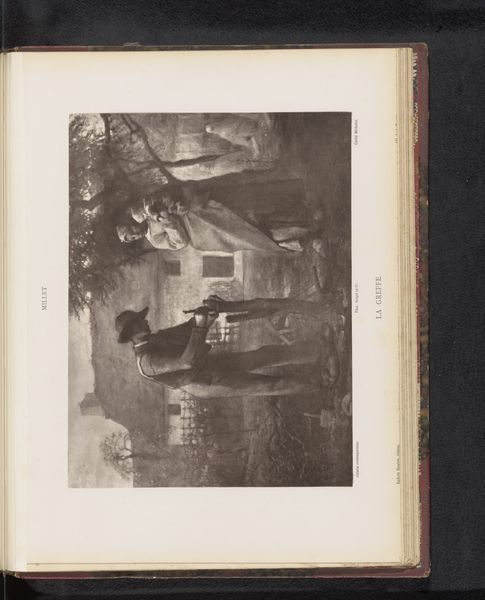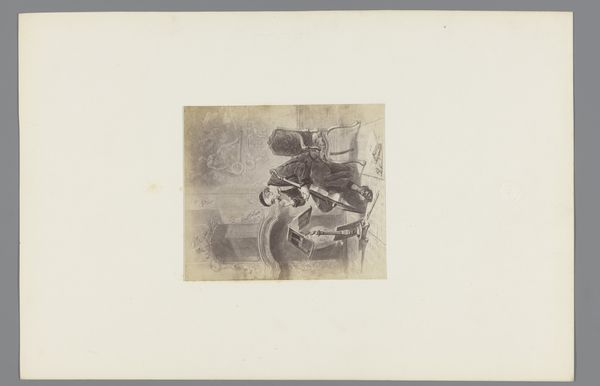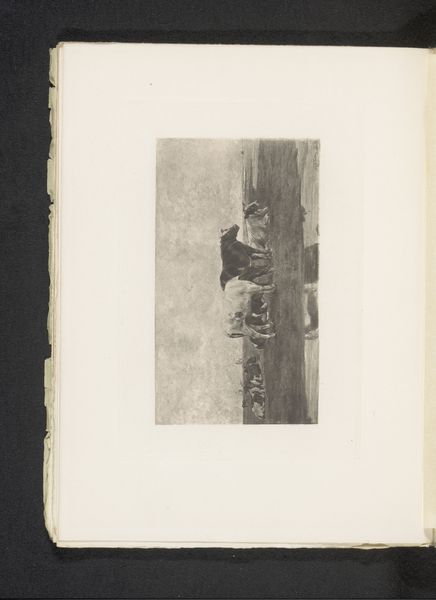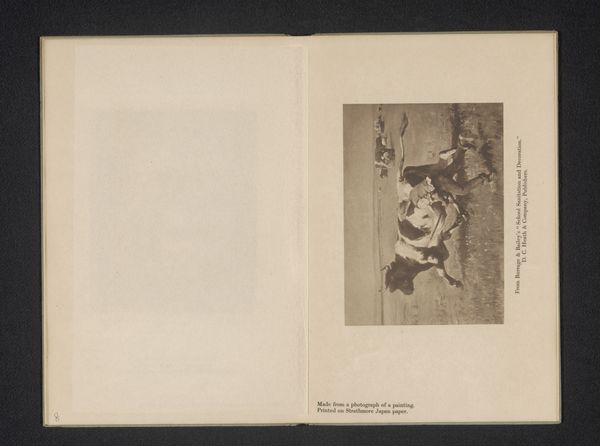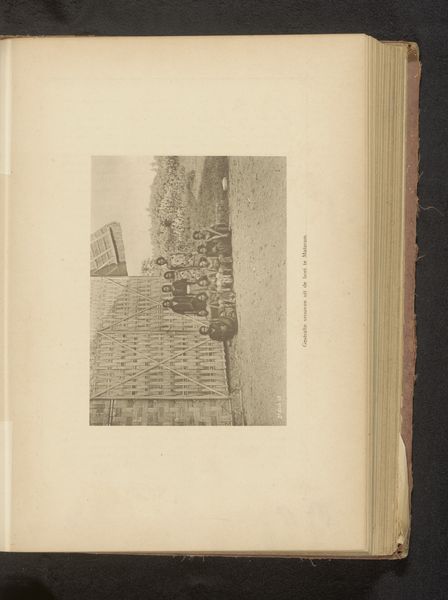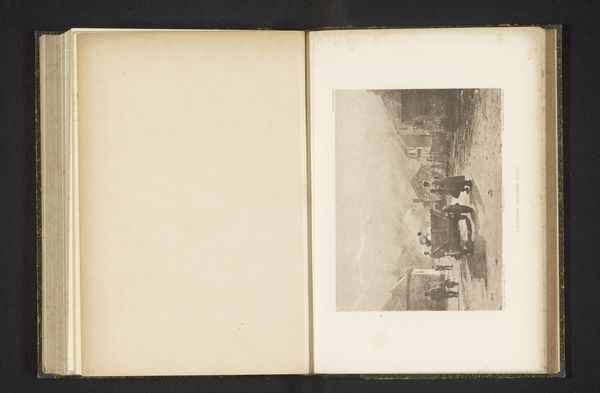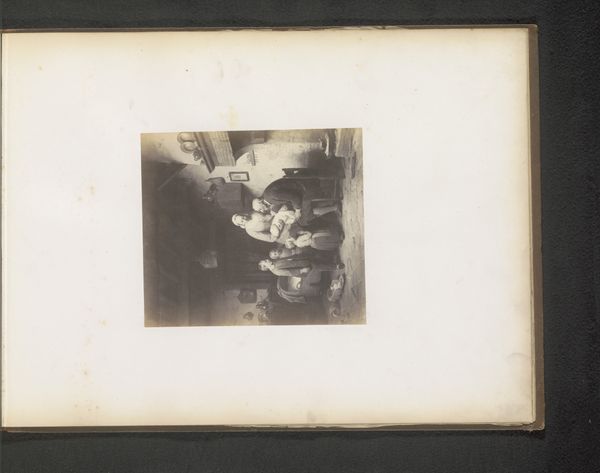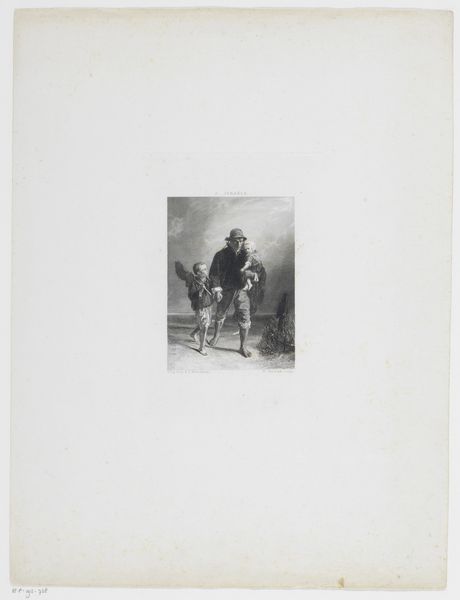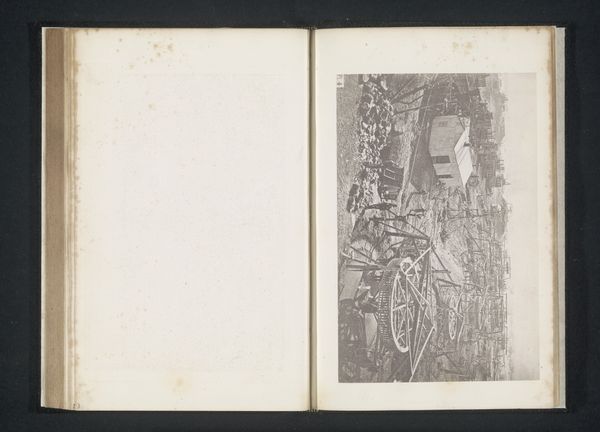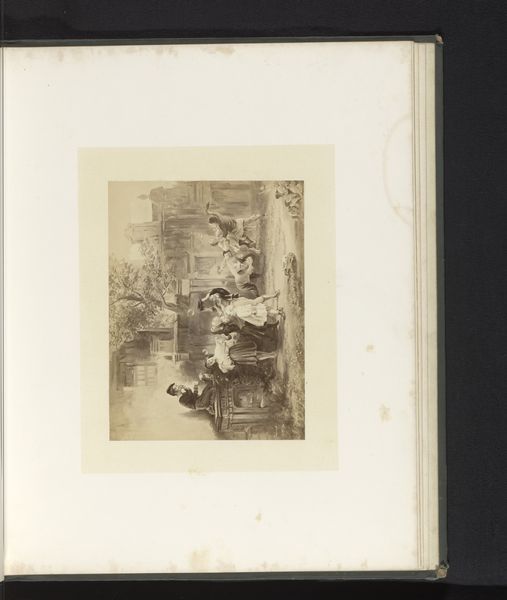
albumen-print, photography, albumen-print
#
albumen-print
#
portrait
#
photography
#
albumen-print
Dimensions: height 222 mm, width 257 mm
Copyright: Rijks Museum: Open Domain
Curator: Let’s take a closer look at this albumen print by Kazumasa Ogawa, titled "Two Japanese Women in a Rickshaw," created around 1890 to 1895. Editor: Wow, this image instantly transports me! The composition, the contrast of light and shadow... it feels staged yet intimate. There’s a subtle sadness, almost a wistful longing, embedded in this moment, don't you think? Curator: Indeed. Ogawa was a significant figure in Meiji-era photography, known for his entrepreneurial spirit. His studio produced countless images that played a pivotal role in shaping Western perceptions of Japan, heavily influenced by Japonisme. It's important to unpack how these depictions reflect both genuine cultural interest and a Western gaze, wouldn't you agree? Editor: Absolutely! It’s that tension between capturing something "real" and inevitably shaping the narrative, even exploiting it for Western consumption, isn't it? Look at how the women are posed, the carefully arranged parasol—is it for sun protection, or for aesthetic impact? Curator: Consider also that albumen prints were immensely popular at the time, valued for their clarity and tonal range. However, their production also reveals colonial underpinnings. Albumen requires egg whites, and vast quantities were often sourced from exploited workforces across continents, linking this seemingly quaint image to broader networks of global inequity. Editor: Right! You never quite think about it at first glance. Knowing about the eggs adds an extra layer of discomfort to it, especially looking at the faces of these women. Is it just me, or is there also this interesting flatness to the photograph, kind of like looking at a painted backdrop on a theater set? It lends a very theatrical quality. Curator: Precisely. Ogawa's work often blurs the line between ethnography and theatre. This raises complex questions about authenticity, representation, and the agency of the portrayed subjects within a context of imperial power dynamics. Are they willing participants or passive models conforming to expectations? It is a critical aspect of understanding such historical images. Editor: This conversation makes me see the photograph with entirely new eyes! It feels much deeper than a simple pretty picture. Thank you for opening up that portal, really. Curator: My pleasure. Considering photography through the lens of social, cultural, and political context can hopefully lead us to rethink these photographs that often conceal complex layers of exploitation behind the surface.
Comments
No comments
Be the first to comment and join the conversation on the ultimate creative platform.
